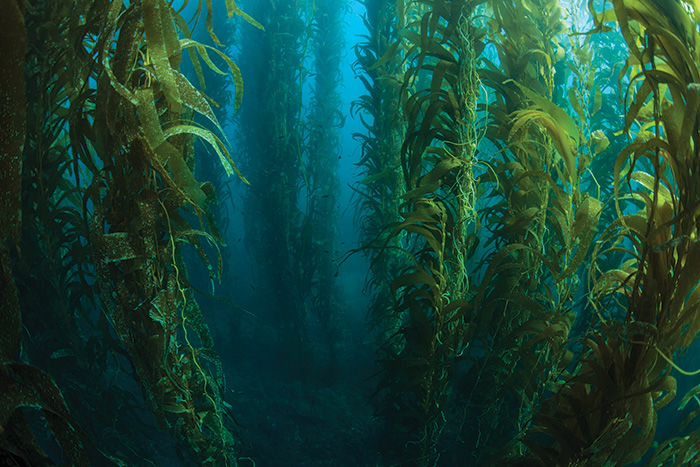The Australian seaweed sector could grow to be worth $1.5 billion by 2040, employing 9000 people and helping to reduce Australia’s greenhouse gas emissions by 10 per cent, according to the recently released Australian Seaweed Industry Blueprint.
By Catherine Norwood
The blueprint, released by AgriFutures Australia in September 2020, identifies research and regulatory priorities that need to be addressed if the industry is to reach its production potential. AgriFutures Australia and the FRDC have invested in seaweed-related research and development for more than a decade.
Lead author Jo Kelly, CEO of the Australian Seaweed Institute, says there have been no commercial-scale seaweed ocean farms established in Australia to date, and there is no industry development plan. However, rapid change is on the horizon.
One opportunity highlighted in the blueprint is the potential to farm Asparagopsis, a native seaweed found off the Australian coast. Meat & Livestock Australia funded recent research by James Cook University and CSIRO which shows that adding a small amount of this seaweed to cattle feed can reduce the cattle’s methane emissions to almost zero. This is significant, given around 10 per cent of greenhouse gas emissions in Australia come from the digestion process of cattle, and seaweed could potentially eliminate this.
Recent media coverage has revealed major investors such as Andrew Forrest, Woolworths and GrainCorp have invested in FutureFeed, a company established by CSIRO to commercialise Asparagopsis as a feed additive.
“This single use for seaweed is incredibly exciting but it is just the tip of the iceberg,” says Jo Kelly.
“Research into bioproducts from native Australian seaweed species has potential to contribute to global health and nutrition while adding significant value to the Australian economy. Seaweed offers a huge opportunity for Australia’s blue economy development.”

Below Giant Kelp (Macrocystis pyrifera) is a potential aquaculture species. Photo: Shutterstock
Industry consultation suggests the potential value of commercial production from seaweed projects being developed could grow to $100 million by 2025, with 1200 jobs and a reduction in domestic
greenhouse gas emissions of three per cent using an Asparagopsis feed supplement to reduce methane emissions from cattle.
The blueprint suggests growth of the industry will rely on significant expansion into ocean cultivation of seaweed and development of high-value functional food and bioproducts for people, animals and plants.
It also highlights the importance of state government aquaculture policy and processes, and R&D funding, as critical to support early stage industry development. In particular, regulatory changes may be required to allow for the large ocean leases that will be needed to establish commercial-scale seaweed aquaculture.
Other barriers identified include that seaweed is not seen as a serious aquaculture industry in Australia, although the global market for products is valued at $A16.8 billion. Australian production is estimated at $1.5 million, almost entirely for non-food products, while we import $40 million of seaweed products, 85 per cent of which are for human consumption.
Markets for Australian products are also not yet proven, although there is a long history of Indigenous use of seaweeds.
The Australian Seaweed Industry Blueprint recommends investment of $8.1 million over two years to fund the following activities as crucial to the future of the sector:
- establish an industry leadership group to drive implementation of the Australian Seaweed Industry Blueprint and work with government,
research and supply chain collaborators to achieve industry potential; - prioritise accelerating Asparagopsis cultivation and developing products
and markets immediately; - develop a national hatchery network that can provide seedstock to rapidly scale cultivation efforts, starting with Asparagopsis and kelps, and expanding to other species over time;
- develop cluster plans for key regions in South Australia and Tasmania, southern NSW and southern Western Australia to drive supply chain development in these areas; and
- support extension of kelp integrated multi-trophic aquaculture (IMTA) throughout temperate regions to follow on from the Seaweed Solutions Cooperative Research Centres Project (CRC-P) currently underway and due for completion in 2022.
More information
Jo Kelly, Australian Seaweed Institute, jo.kelly@australianseaweedinstitute.com.au





